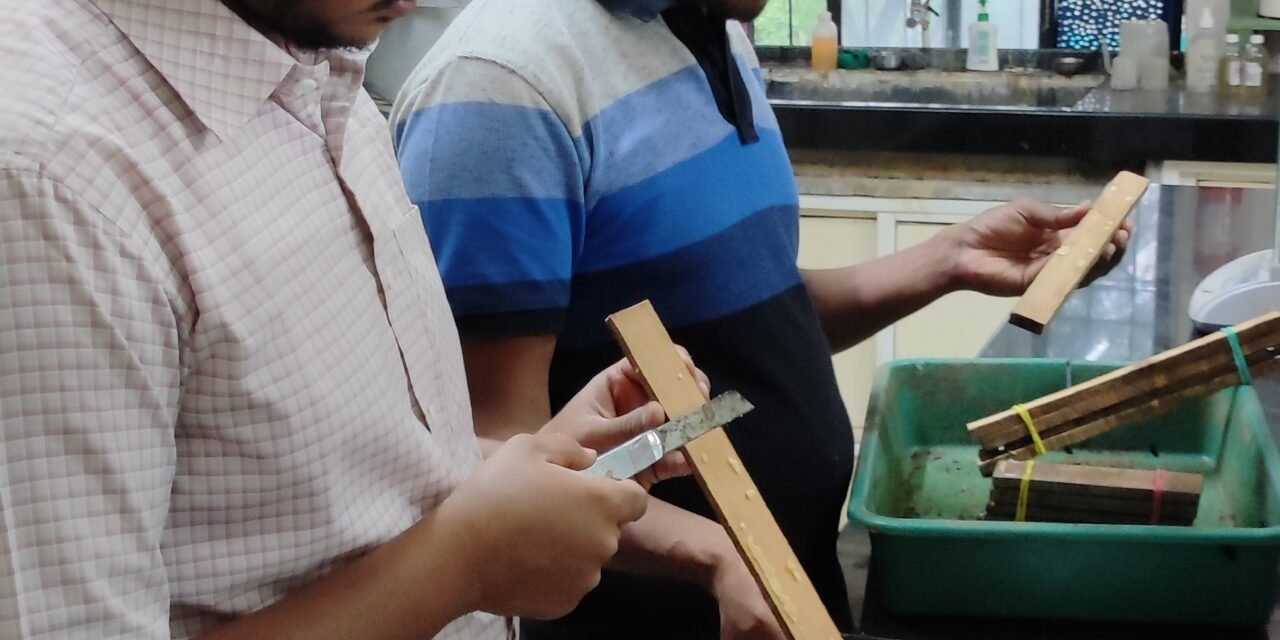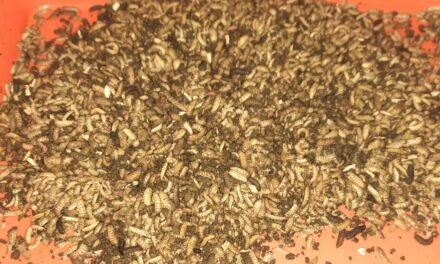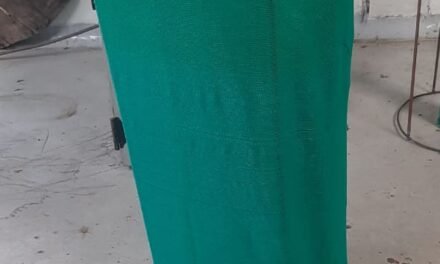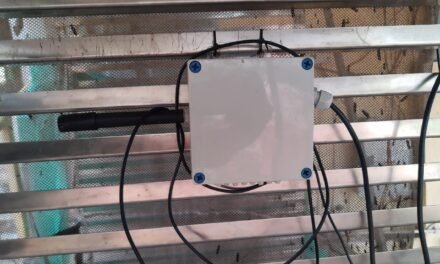Black Soldier Fly 2nd trial
Introduction –
The Black Soldier Fly, Hermetia illucens, is of the dipteran family Stratiomyidae. The larvae and adults are considered neither pests nor vectors. Instead, black soldier fly larvae play a similar role to that of redworm as essential decomposers in breaking down organic substrates and returning nutrients to the soil. The larvae have voracious appetites and can be used for composting household food scrap and agriculture waste products. Additionally, black soldier fly larvae (BSFL) are an alternative source of protein for aquaculture, animal feed, pet food and human nutrition.
Need of project:
1) Due to urbanization in metro cities the waste management is not proper, because of this water and air pollution is increasing.
2) Decomposition rate can be improved by adding BSF larva in the composters.
Objectives:
1) To take trails of BSF(black soldier fly) cycle with help of cooked and uncooked kitchen waste.
2) To set SOP of the Business Model.
Idea or Technology to achieve objectives:
1) Hatch the eggs of BSF in the cattle feed, fish feed or any other appropriate feed like azola, etc till the larva become 5 days. After that 5 days larva adding in the composter and getting 15-20 days larva for prepupa stage for making flies or using as poultry or fish feed.
2) To set 10 days cycle of BSF eggs.
3) Composting could be foule smell free by:
a. Addition of dry matter like saw dust, etc.
b. By turning compost pil.
c. Apply BSF larva.
d. Application of appropriate microbial culture.
4) We plan to optimise cost effective system by permutation and combination of above for approaches.
- Material required –
1.Tray
2.Larva
3.Azolla
4.Cattle feed
5.Fish feed
6. Rice
- Seeds – Eggs of BSF
- Setup –
- Hatching of eggs.
- Took 3 trays, in that trays water and food is added which is given in table below. After that those eggs were added on top of the tray using a sieve.
| Tray | 1 | 2 | 3 |
| Date | 24/08/2022 | 29/08/2022 | 29/08/2022 |
| Food | 300g cow feed | 200g fish feed | 50g azola+150g rice |
| Water | 450 ml | 400ml | 250ml |
| BSF eggs | 4g + 3g = 7g | 12g | 12g |
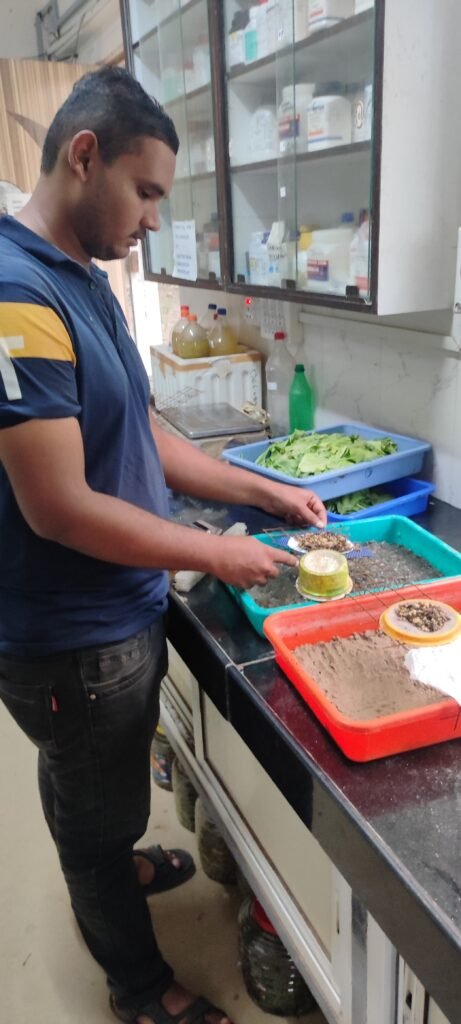
5/09/2022
Tray 1&2 the eggs hatched and larva came out .
Tray 3 eggs didn’t hatched.
Tray 1&2 : 50gm cow feed + 100ml water.
7/09/2022
Tray 1&2 : 150gm cow feed + 300 ml water.
8/09/2022
The larva of this trays were of different size so separated the two sizes in different trays A(small size) and B(big size).
A: 150gm feed + 300ml water
B: 400gm feed + 800ml water
12/09/2022
Tray B 1kg larva’s we used in composter for decomposition of waste. The total weight of larva was 1kg and in 1gm 30 larva were present.
The small size larva were 500gm and in 1gm 102 larva. So we arranged 9 trays each 3 of Cow feed, Rice & Rice+azola.
| A | B | C |
| A1 A2 A3 | B1 B2 B3 | C1 C2 C3 |
| 55 gm larva + 900gm feed + 1800ml water | 55gm larva + 1.4 kg rice | 55gm larva + 1.2kg rice + 600gm azola |
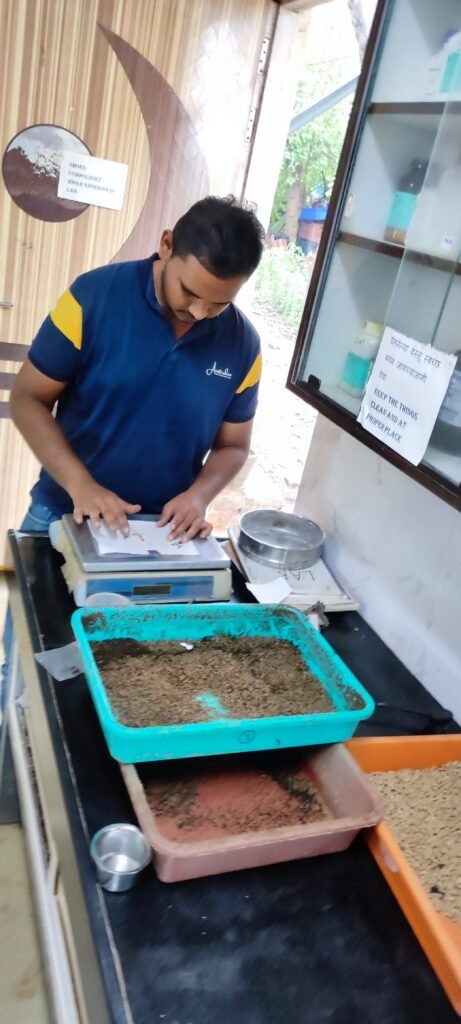
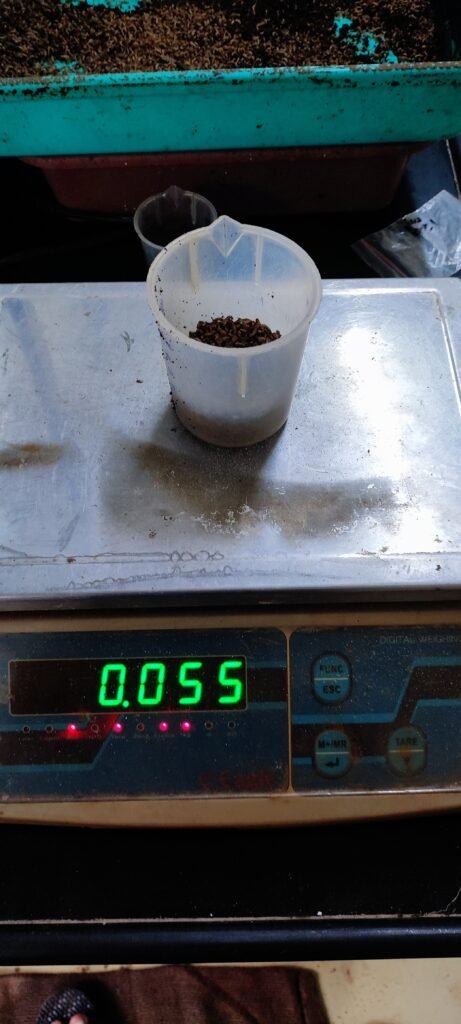
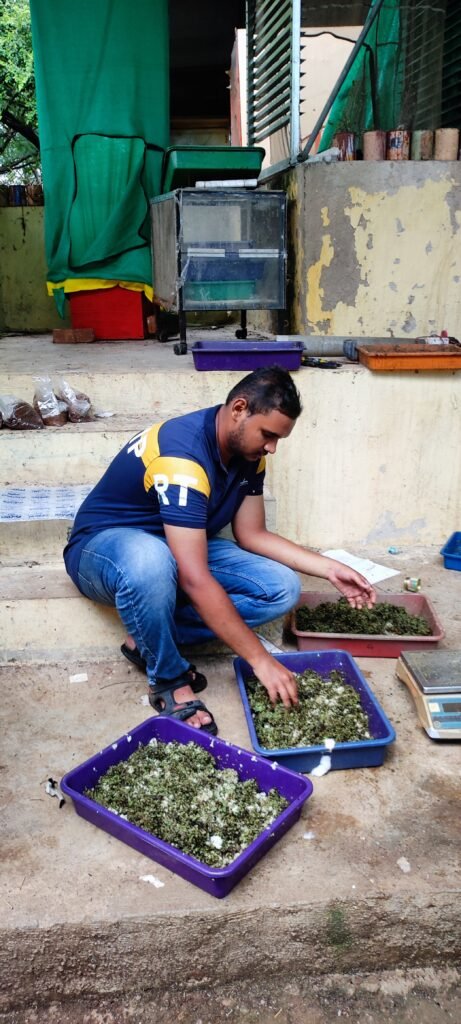
22/09/2022
Today we measured the size of bsf larva and their growth in cattle feed , azola and rice.
| A | A1: Larva=740gm 1gm =8 Compost= 830gm | A2: Larva=769gm 1gm= 9 Compost= 954gm | A3: Larva=653gm 1gm= 11 Compost= 930gm |
| B | B1: Larva=348gm 1gm =18 Compost= 288gm Dust= 100gm | B2 Larva=333gm 1gm =22 Compost= 430gm Dust= 100gm | B3 Larva=310gm 1gm =30 Compost= 413gm Dust= 100gm |
| C | C1: Larva=310gm 2gm = 29 Compost= 750gm Dust= 150gm | C2: Larva=273gm 2gm =30 Compost= 780gm Dust= 150gm | C3: Larva=289gm 2gm =33 Compost= 630gm Dust= 150gm |
- Moisture Content
- Dust=16%
- Rice=64%
- Azola+rice=84%
- Feed =56%
Feeding:
| A | B | C |
| A1 A2 A3 | B1 B2 B3 | C1 C2 C3 |
| 400gm feed + 800ml water | 900g rice | 400gm feed + 800ml water |
30/09/2022
Feeded Tray B1,B2&B3: 100gm feed+200ml water.
10/10/2022
Separated the BSF pupa from trays A(950gm) , B(700) and C(650gm) and kept for making flies.
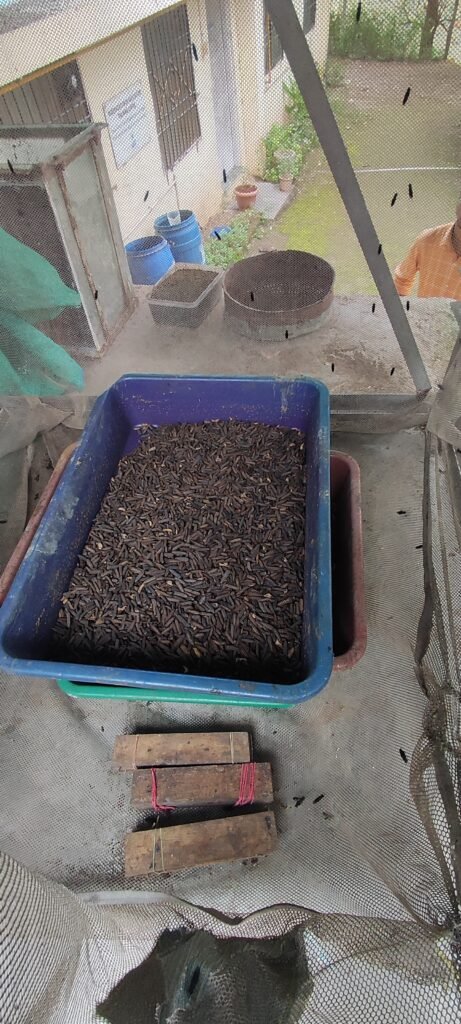
Observations of the above BSF trial on tray with cow feed, azolla & rice.
- The growth rate of the larva have seen best in the cow feed.
- In rice and azolla the growth rate is good but the larva’s are not healthy.
- Larva’s are healthy in cow feed.
- Got 2.3kg pupa for flies generation.
12/09/2022-23/09/2022
After discussion with Dixit sir, to reduce other worms in the composter he told to add the BSF larva in one side rack and fill the waste equally in the above 3 racks every day.
So we removed Rack 6 and filled equally in Rack 2,4,6
Filled 330gm BSF larva of 15 days in Rack 2,4,6 which contained 30larva in 1gm
| Date | Garbage(kg) | Dry Matter(kg) | Culture(ml) | Temperature°c |
| 12 Sep2022 | 12 | 3 | 500 | |
| 13 Sep2022 | 8 | 3 | 500 | |
| 14 Sep2022 | ||||
| 15 Sep2022 | 5 | 2 | 500 | |
| 16 Sep2022 | 13 | 3 | 500 | |
| 17 Sep2022 | 12 | 3 | 500 | 27,25,25 |
| 18 Sep2022 | 5 | 1 | 500 | |
| 19 Sep2022 | 16 | 4 | 1000 | |
| 20 Sep2022 | 16 | 4 | 1000 | |
| 21 Sep2022 | ||||
| 22 Sep2022 | 9 | 3 | 500 | 22, 25, 25 |
| 23 Sep2022 | 14 | 4 | 1000 | 25, 26, 25 |
Observations:
- No smell as long as garbage was in composter
- Lichate seen
- Smell evident on removal from composter.
- Larva’s could not be separated
- 600 gm pre pupa could be separated
- Good movement of larva’s in composter which got reduced on removal from composter to cut IBC.
Conclusion:
Larva’s could not be separated from the compost, So we decide to do composting in the crate system.
24 September 2022
Went to Alandi to bring 5 DOL BSF larva. For the next BSF trial.
30/09/2022
Brought 10gm eggs and kept for hatching in 400 gm feed and 800 ml water.

Also brought 1.5kg 15DOL larva and gave 500gm feed.
4/10/2022
Homogenised 1551gm pre-pupa +dust and removed 600gm pre-pupa from it and kept for making flies.
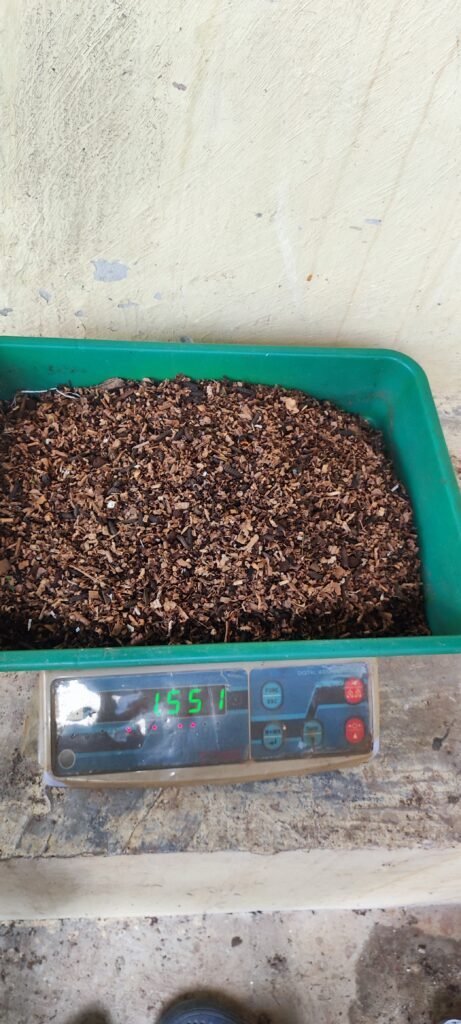
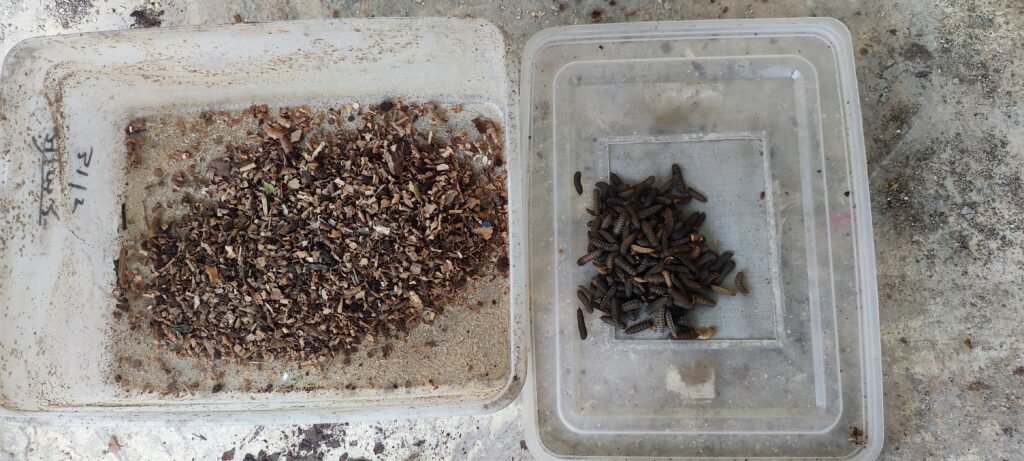
Flow chart for BSF cycle and composting waste
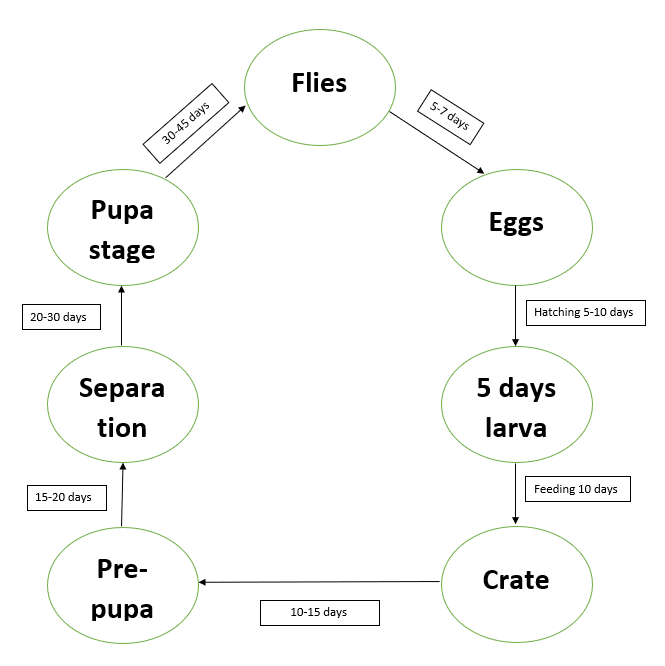
26 September 2022 – 5 October 2022
After discussion with Dixit sir, about how to increase the decomposition rate, so we decided to do the composting in the crate.
So we took the crate and every day added 5kg cooked and uncooked waste with 250ml microbial culture in this 10 days and added 300gm BSF larva of 5 DOL (costing ₹400) in the crate on 1st day. Below the crate we put sawdust to absorb the litched.
Crate size 53*36*30.5 i.e 58 lit capacity
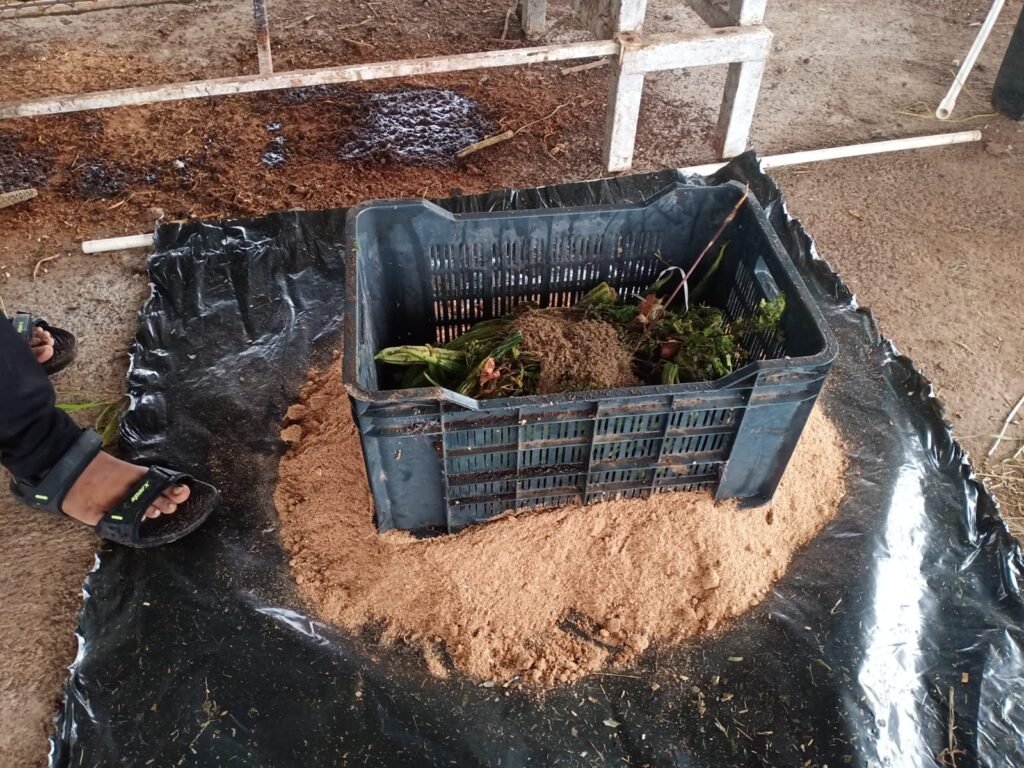
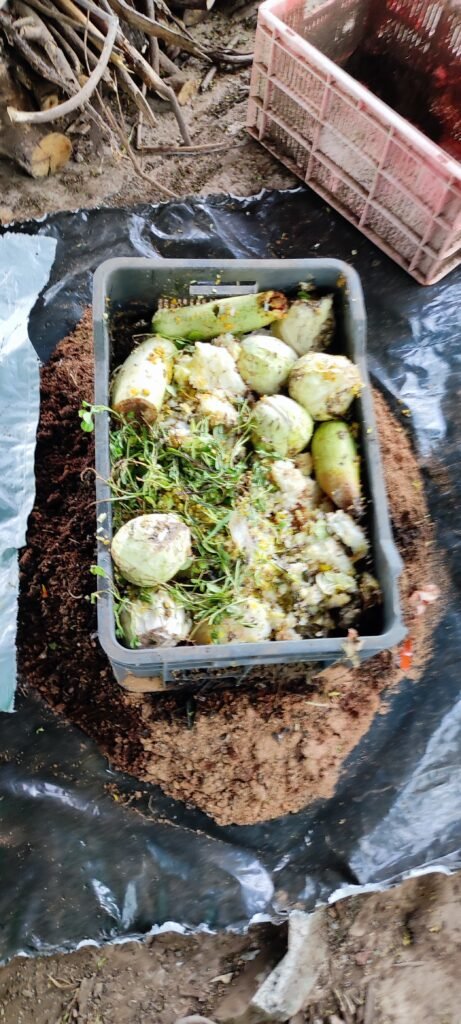
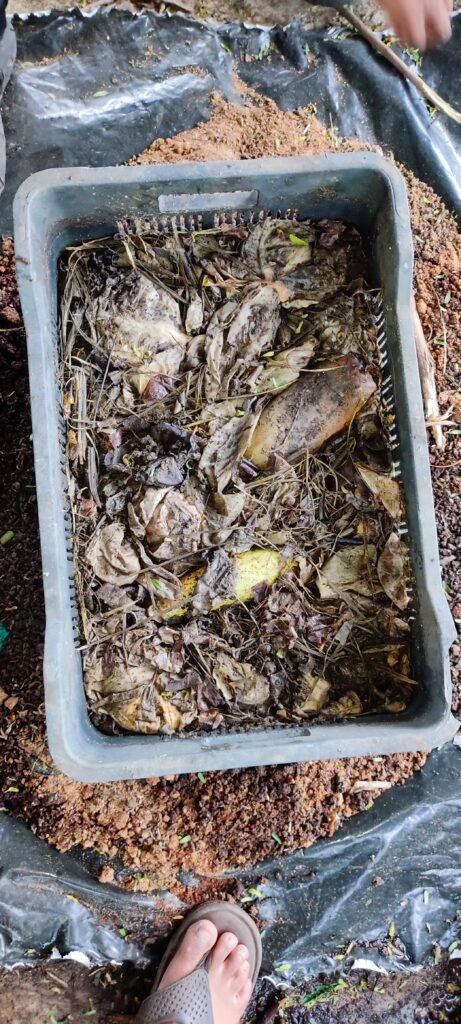
Observations:
1) The composting was good as the larva have consumed the waste in more amount.
2) The size of larva increased.
3) The foul smell was there as at the bottom moisture was more as we didn’t added sawdust.
12 October
Today was 17th day of composting crate. So we attached the sieve to the frame for sieving the bsf larva from the crate.
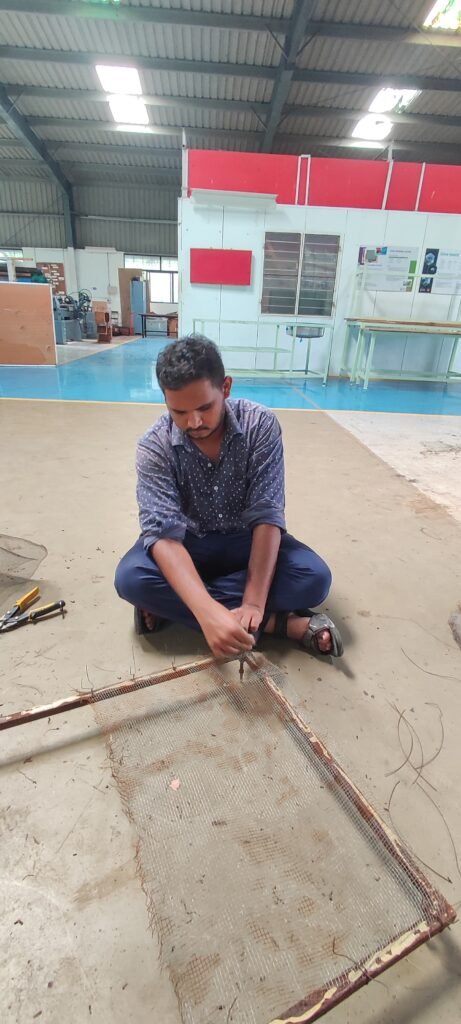
So we transferred the compost from crate to this sieve.
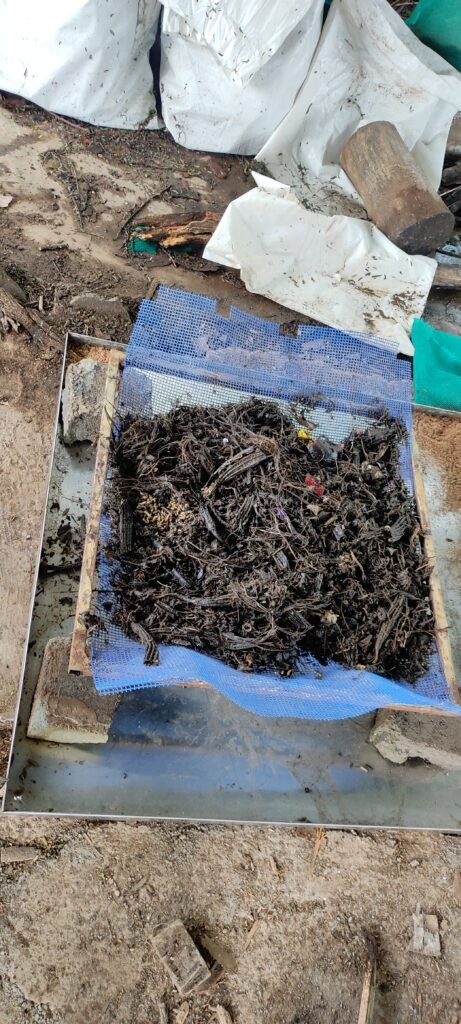
With the help of this sieve we removed 2998 gm of BSF larva from half of the compost.
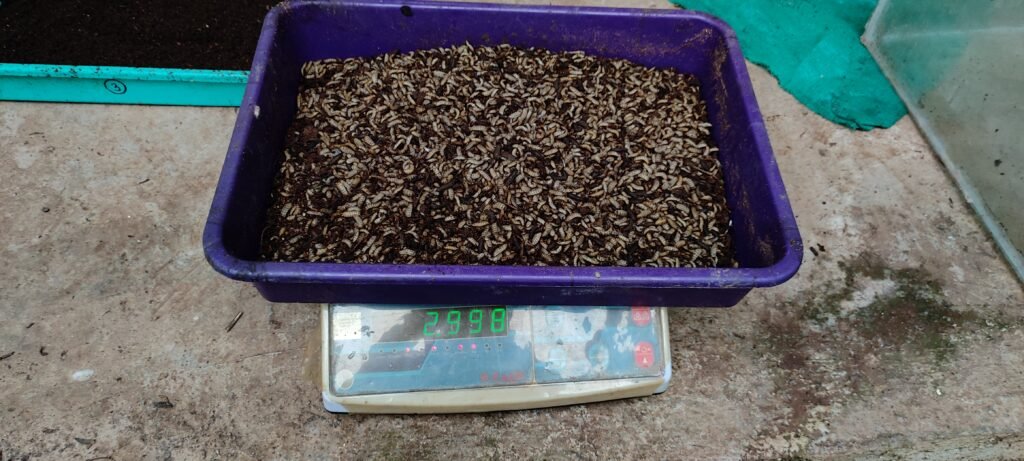
1kg cow feed was given to the 1998gm pre pupa
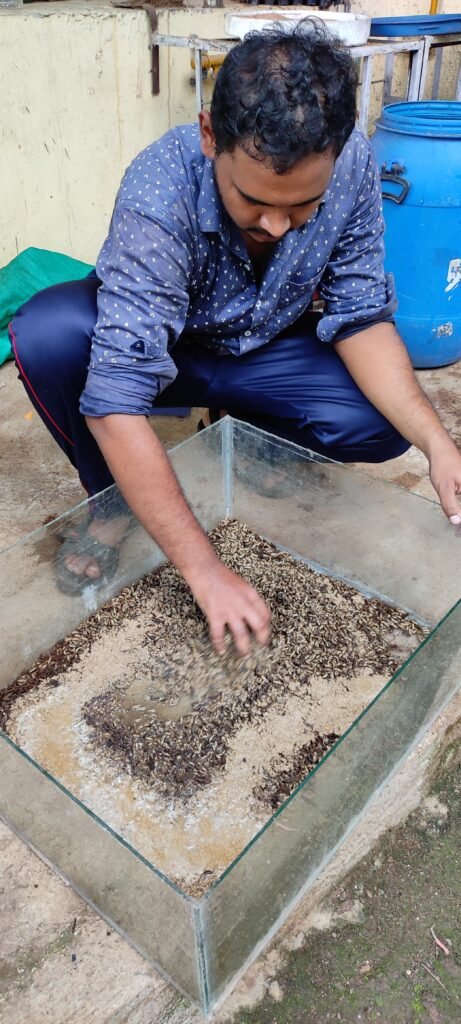
13 October 2022
Today we separated the remaining pre-pupa from the compost, they were 1272gm and kept them in the feeding tray.
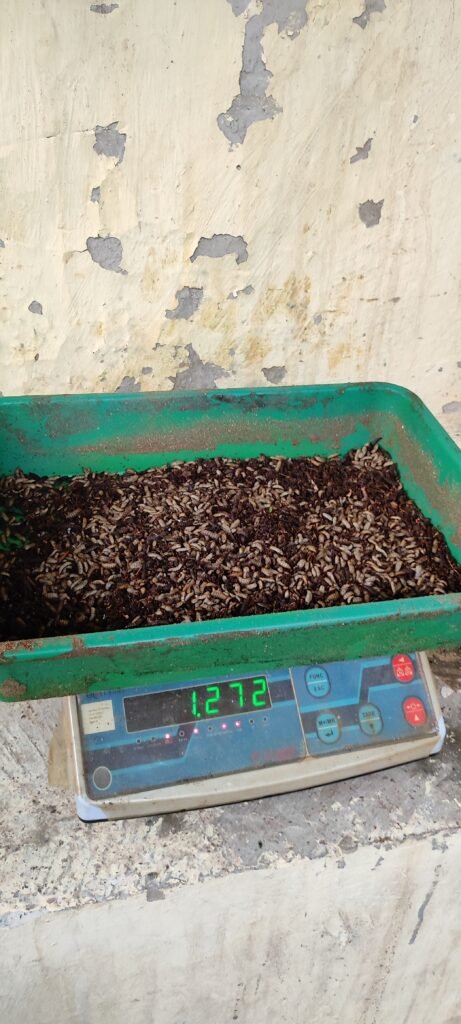
14 October 2022
Today we separated 1790gm pre-pupa from the sawdust which was kept below the tray.
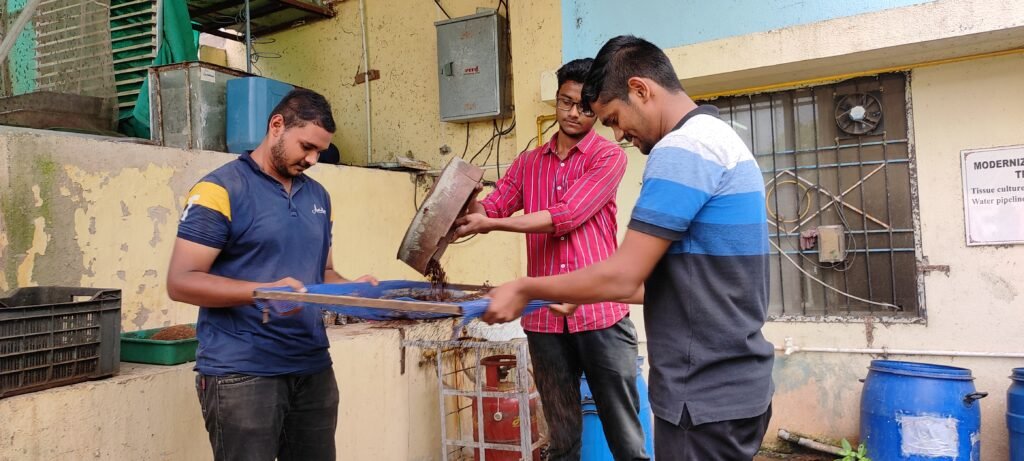
Observation:
- There was foul smell for compost if it was disturbed with rod.
- From 50 kg waste we got 4.9 kg compost and 6.1kg pre-pupa.
- The weight reduction was 90%.
- Growth of larva was good.
- Lichet dropping
Conclusion:
Lichet was dropping from the crate, so decided to take next trial by adding sawdust.
14/10/2022
After discussion with Dixit sir, we decided to do compost in 2 crates and now by adding sawdust in amount of 40% with respect to the waste.
So took 2 crates of same size above and put shed-net at the bottom and kept sawdust at the bottom of two crates. Also the 10 gm eggs were hatched and from it we got 522 gm 5DOL larva.
From today we added 5kg waste in each crate and on that added 261gm larva on each tray.

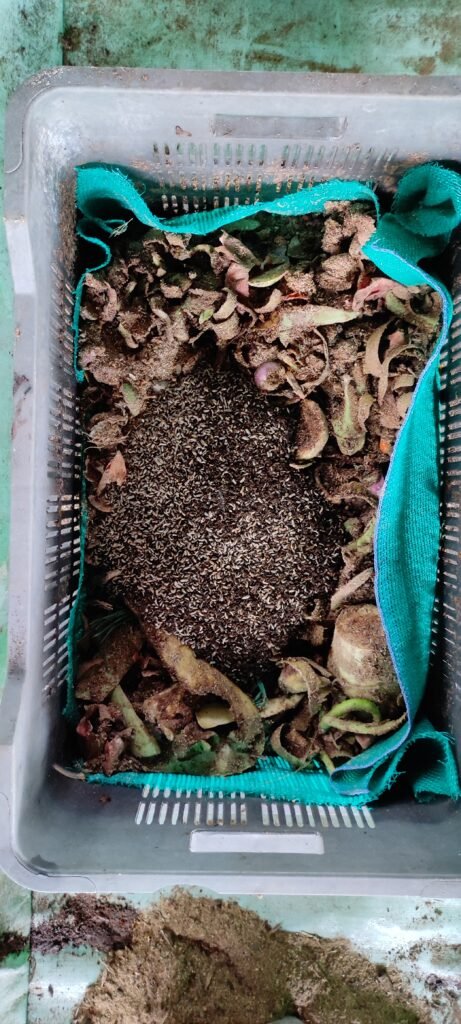
15 October 2022
Today we made wooden strips and kept in the BSF flies mesh so that flies can lay eggs. And below that kept rotten apple below it.
19 October 2022
Removed 5gm eggs and kept for hatching in Tray 1
22 October 2022
Removed 4.2gm eggs and kept for hatching in Tray 1
29 October 2022
Removed 8.56gm eggs and kept for hatching in Tray 2
31 October 2022
Separated pre-pupa from crate 1
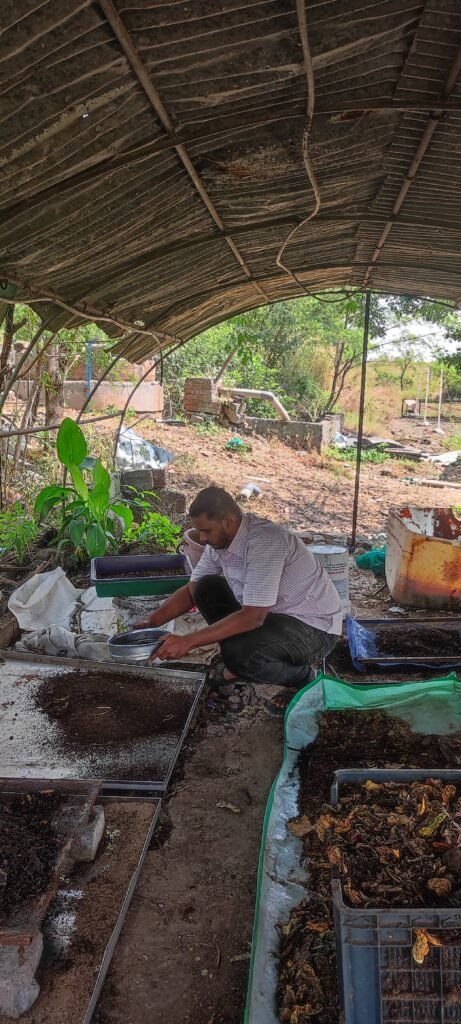
1 November 2022
Separated pre-pupa from crate 2
We got 5982 gm pre-pupa from 522gm 5DOL larva by feeding 100 kg kitchen waste. We got 13kg compost from this system.
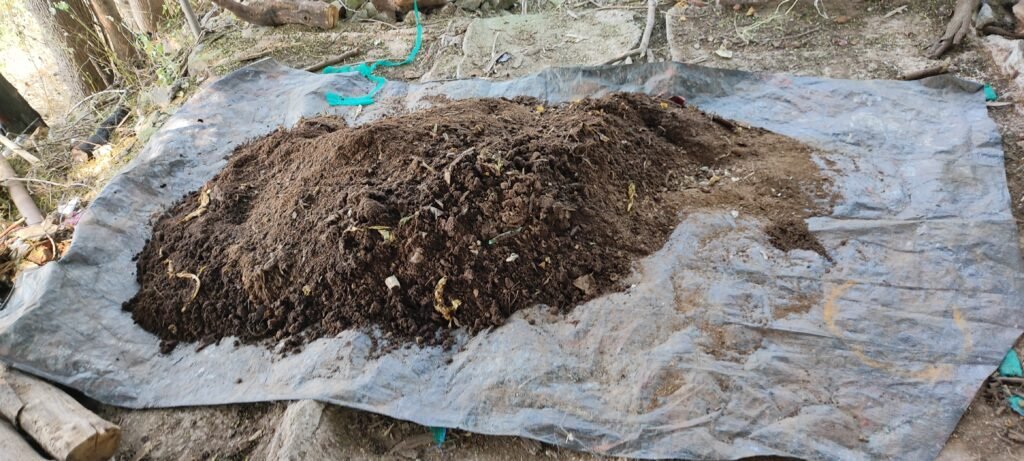
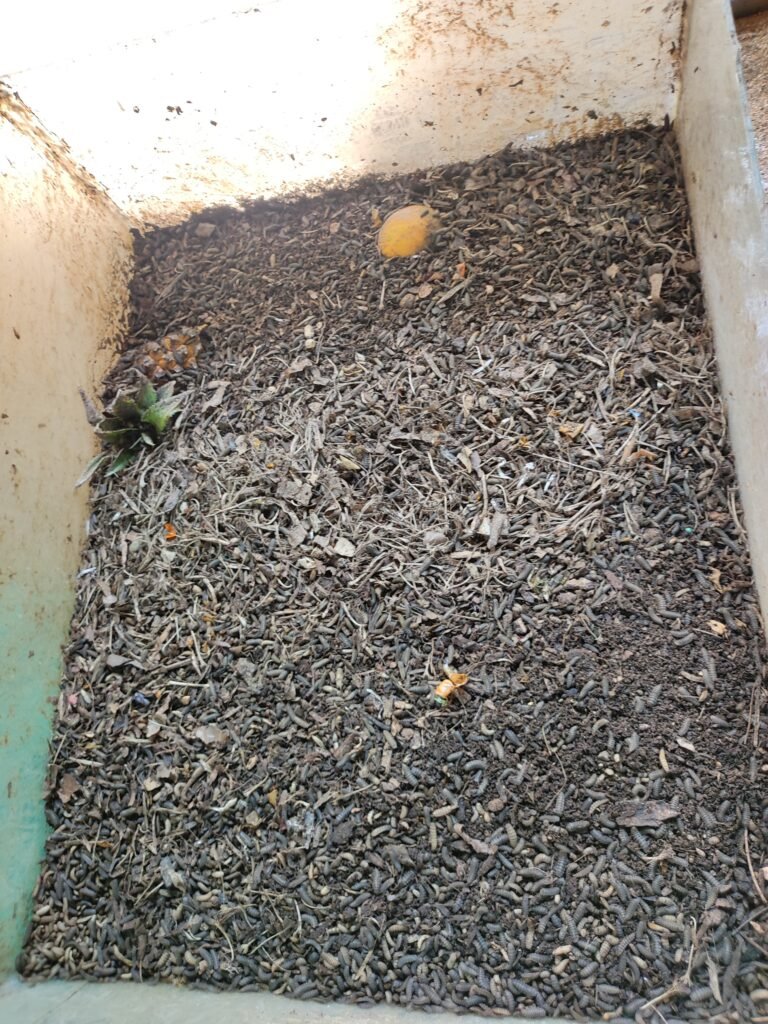
Removed 7.5gm eggs and kept for hatching in tray3 with 400gm cowfeed.
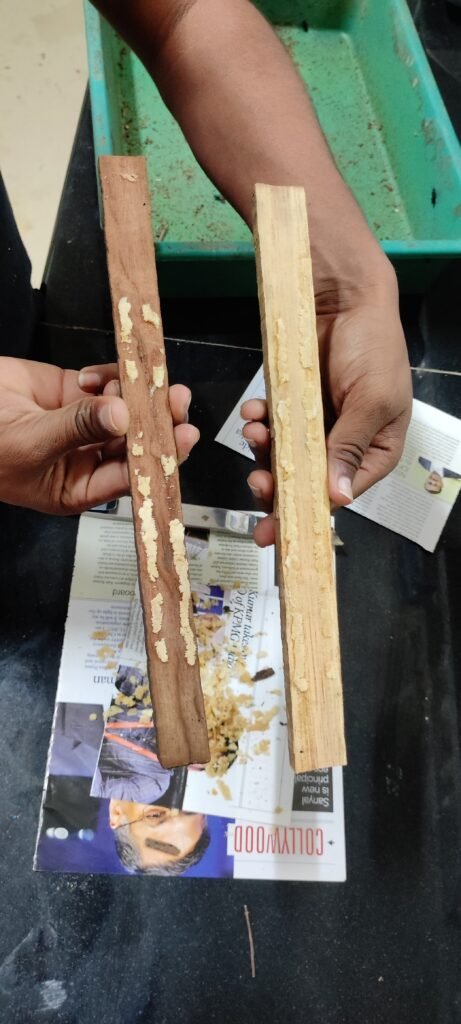
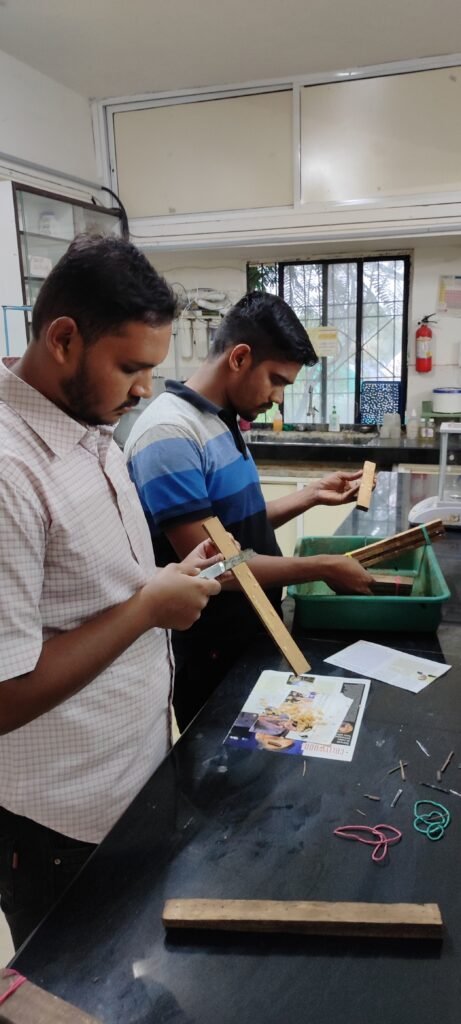
4 November 2022
Removed 3.66gm eggs and kept for hatching in tray 3
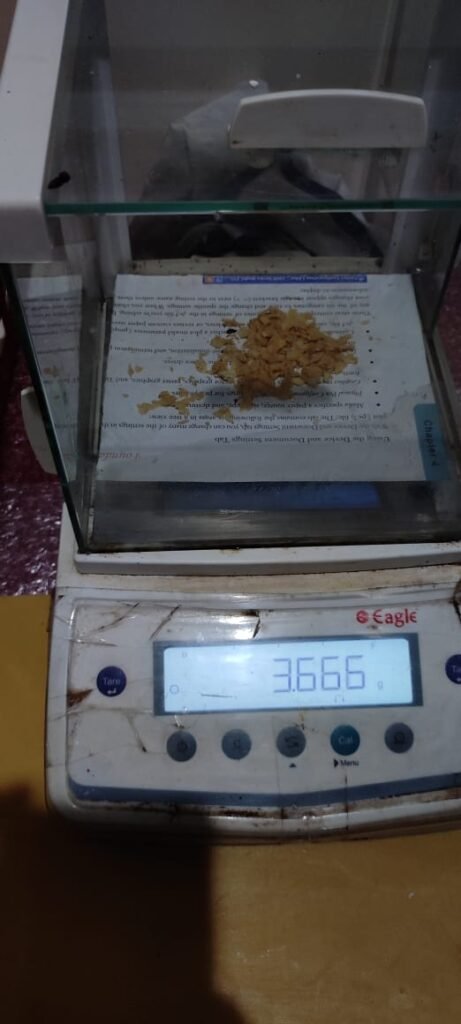
7/11/2022 – 16/11/2022
After discussion with Dixit sir, we decided to do compost in 2 crates and now by adding only 10kg cooked food waste and sawdust in amount of 40% with respect to the waste.
So we added 165gm 5DOL larvas in both crates each.
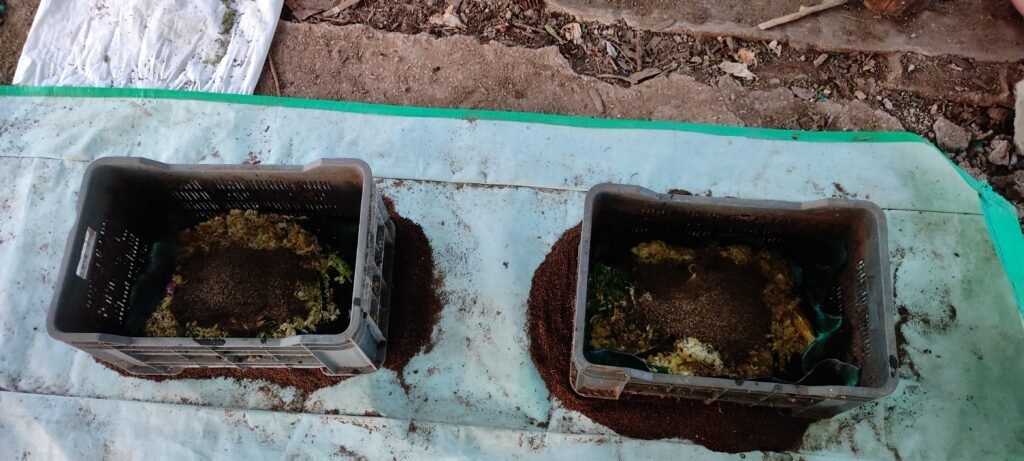
We added 5kg waste in both crates each from 7/11/2022-12/11/2022.
13/11/2022
On 7 day the larves started to came out so transferred the crates to azola bed. Today added 14kg waste.
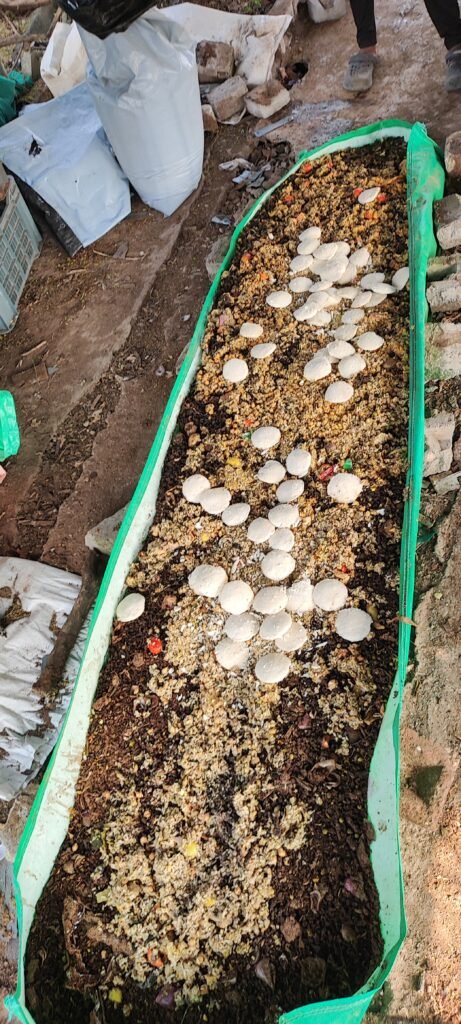
14/11/2022
Today we filled 20kg waste in the azola bed.
15/11/2022
Today we filled 16kg waste in the azola bed.
16/11/2022
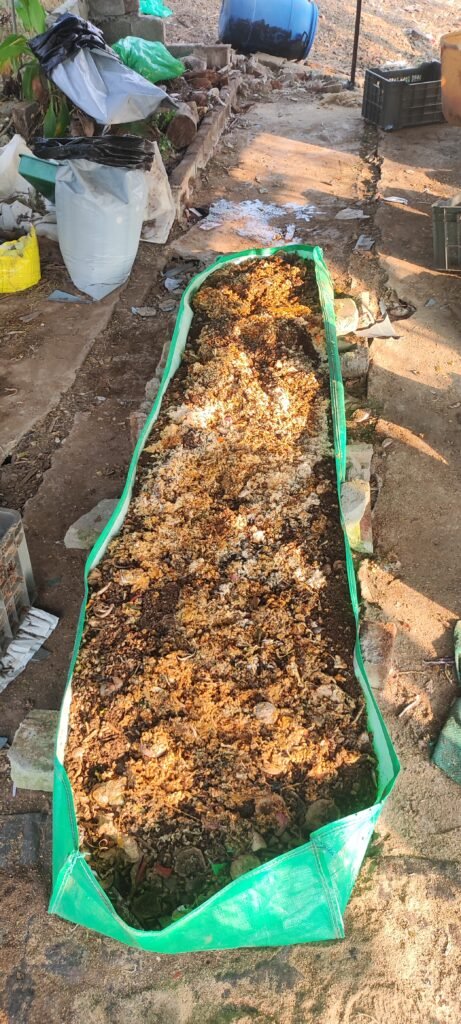
Today we filled 20kg waste in azola bed.
19/11/2022
Today we separated 15kg 15DOL larva from the bed.
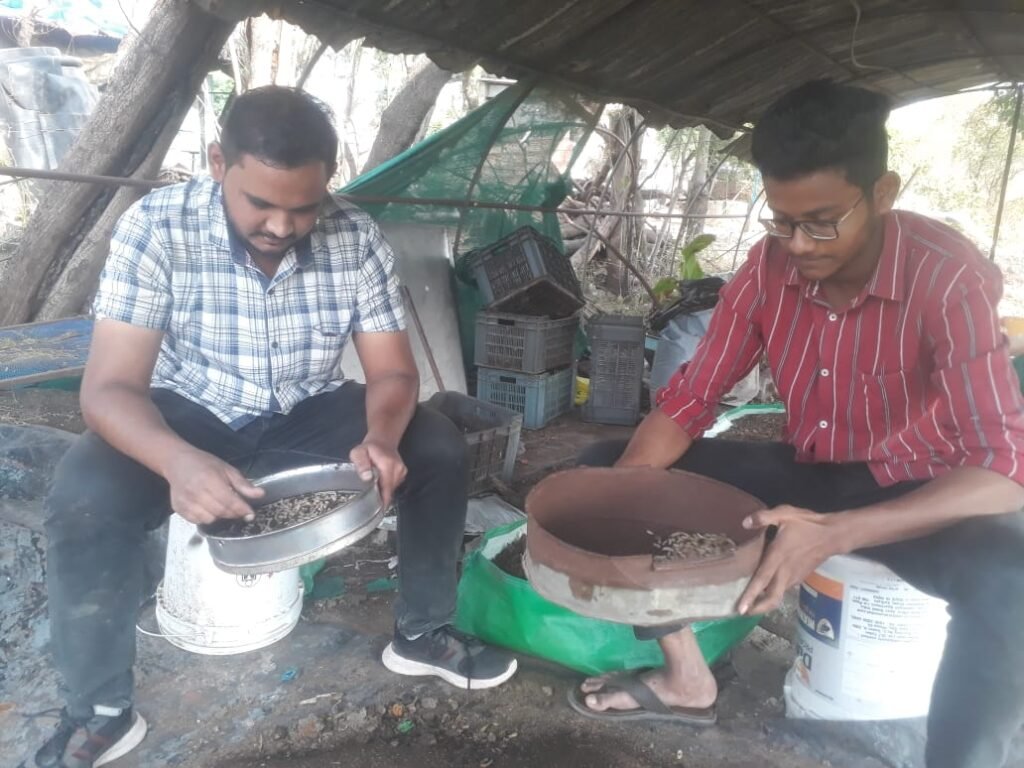

OBSERVATIONS
- There was foul smell in the surrounding as the moisture content in the kitchen waste was more.
- As larva’s were falling from the crate so transferred to azola bed.
- From 130kg of kitchen waste we got 15kg larva’s.
- The growth of larva was good and they were healthy as compared to previous cycle as the waste contain large amount of cooked food.
15/11/2022
Today we started the trial of BSF with chicken waste. Added 261gm 5DOL in 3.5kg chicken waste.
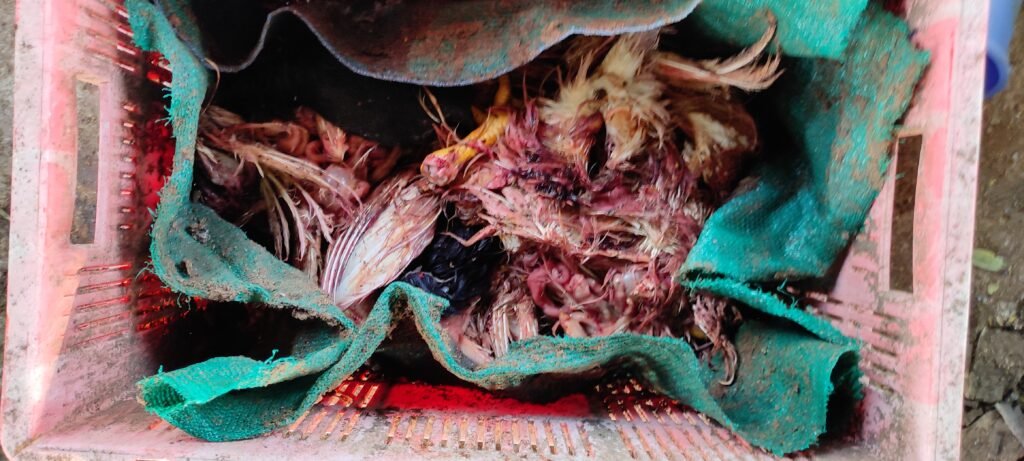
16/11/2022
The above test failed because the dog disturbed the system.
So took 200lit barrel and started the new trial by adding 5.5kg waste chicken and 230gm 5DOL larva’s.
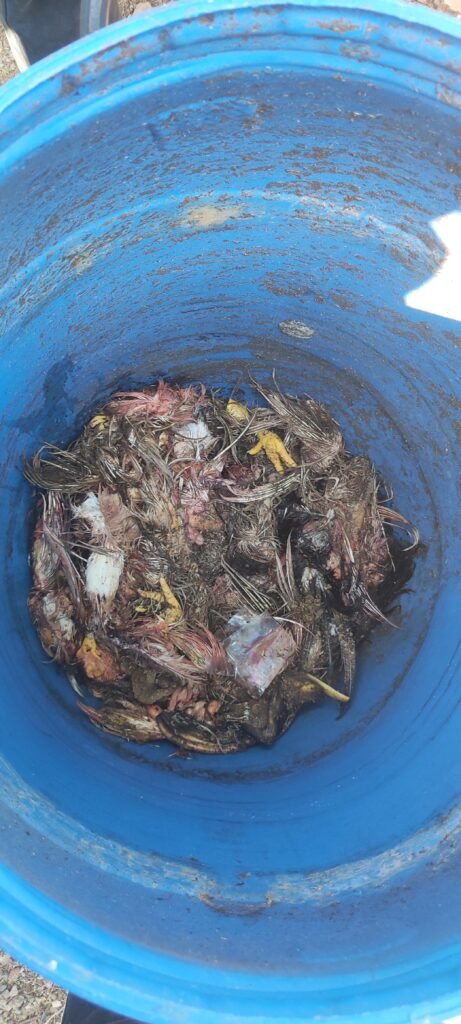
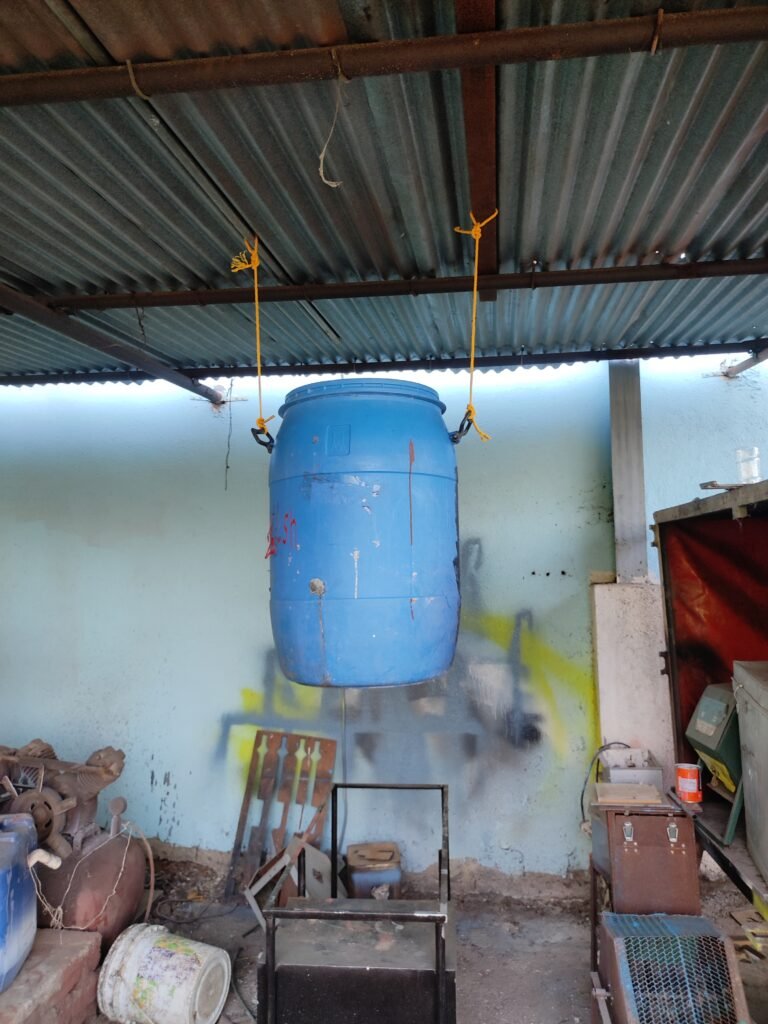
Hanged the barrel to the roof as dog should not disturb the system.
21/11/2022
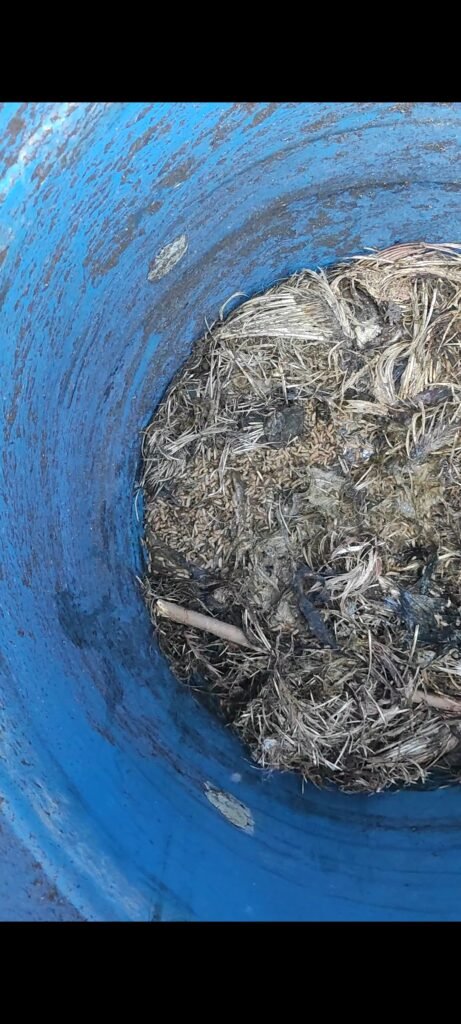
OBSERVATIONS:
- The bsf larva can consume and grow in chicken waste.
- Faul smell came in more amount.
- Growth of larva is good.
CONCLUSION
- I have found out that we could use the kitchen waste to derive profits by doing Composting using Black Soldier Fly.
- I got an opportunity in learning proper handling of waste and carry out waste management.
- The separation of larves from the compost is difficult, so need to develop machines for separation.
- We also tried to maintain the temperature and humidity of eggs hatching period but the humidity was not maintained in the incubator so the feed get dried and the larva’s does not grow.
- BSF larva’s can also consume chicken waste, but it is difficult to maintain the trial because of pets. But it can be maintained if the trial is done in the cage.
- Also we have noticed that the BSF larvas grow healthy in cooked food then in uncooked food.
- Gained new knowledge and skills.
- Overall the working experience was good and got awareness about how the management of waste is important for future generations.

